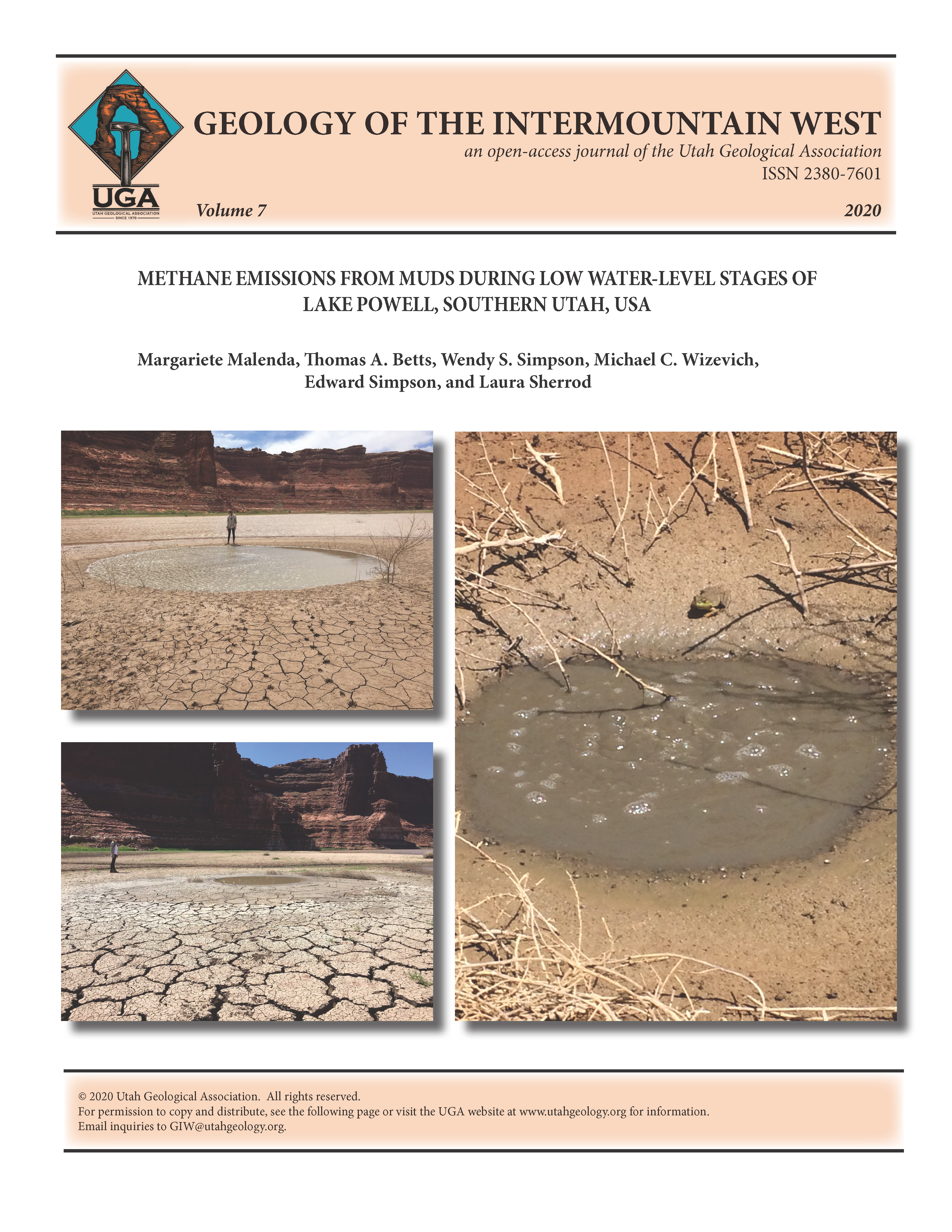Methane emissions from muds during low water-level stages of Lake Powell, southern Utah, USA
Abstract
The Glen Canyon Dam, along the Colorado River in Page, Arizona, was completed in 1963, creating the Lake Powell reservoir which spans the Arizona-Utah border. The water levels of Lake Powell peaked in 1983 and have declined since, releasing overlying pressure on the underlying sediment. In general, water levels experience seasonal highs and lows, with punctuated periods of considerable and steady decreases (1987 to 1993, 1999 to 2005, and 2011 to 2014) and less dramatic recoveries (1993 to 1999 and 2005 to 2011). This release of overpressure coupled with increasing pore pressures due to biological methane production has created mud volcanoes, structures along the shoreline made of cavities that allow fluid and gas to rise to the surface and escape. Although these sedimentary structures have been assessed using geophysical techniques and excavation to characterize their morphologies and fracture propagation, limited chemical data has been reported on the inputs and products of these gas- and fluid-escape features.
This research investigates the relative proportions of methane (CH4), carbon dioxide (CO2), and air (unseparated nitrogen [N2] and oxygen [O2]) gas released, the variability of these proportions through time, and how these gases formed in the subsurface. The field site is along the Lake Powell near Hite, Utah. Three gas samples were collected from mud volcanoes along the delta in July 2014, whereas 21 samples were collected in July 2015 and were analyzed via gas chromatography (GC). The GC analyses from 2014 and 2015 have a mean CH4 concentration of 81.47 ± 9.29 percent of volume (% v/v) and 32.40 ± 15.31% v/v, respectively. In May 2016, 50 samples from 25 vents were collected and analyzed via GC for bulk composition, and 11 of which were analyzed by isotope ratio mass spectrometry (IRMS) for carbon and hydrogen isotope content of CH4. The 2016 GC analysis detected average relative concentrations for CH4, CO2, and air of 74.51 ± 14.08% v/v, 2.82 ± 3.76% v/v, and 22.67 ± 14.28% v/v, respectively. Gas compositions from individual vents varied over the three-day sampling timeframe in the summer of 2016 including CH4 decreases of up to 66% v/v and increases of up to 38% v/v. IRMS signatures of samples collected in 2016 indicate the gasses are in part generated during microbial respiration through hydrogenotrophic and acetoclastic methane production.

Copyright (c) 2020 Geology of the Intermountain West

This work is licensed under a Creative Commons Attribution 4.0 International License.




